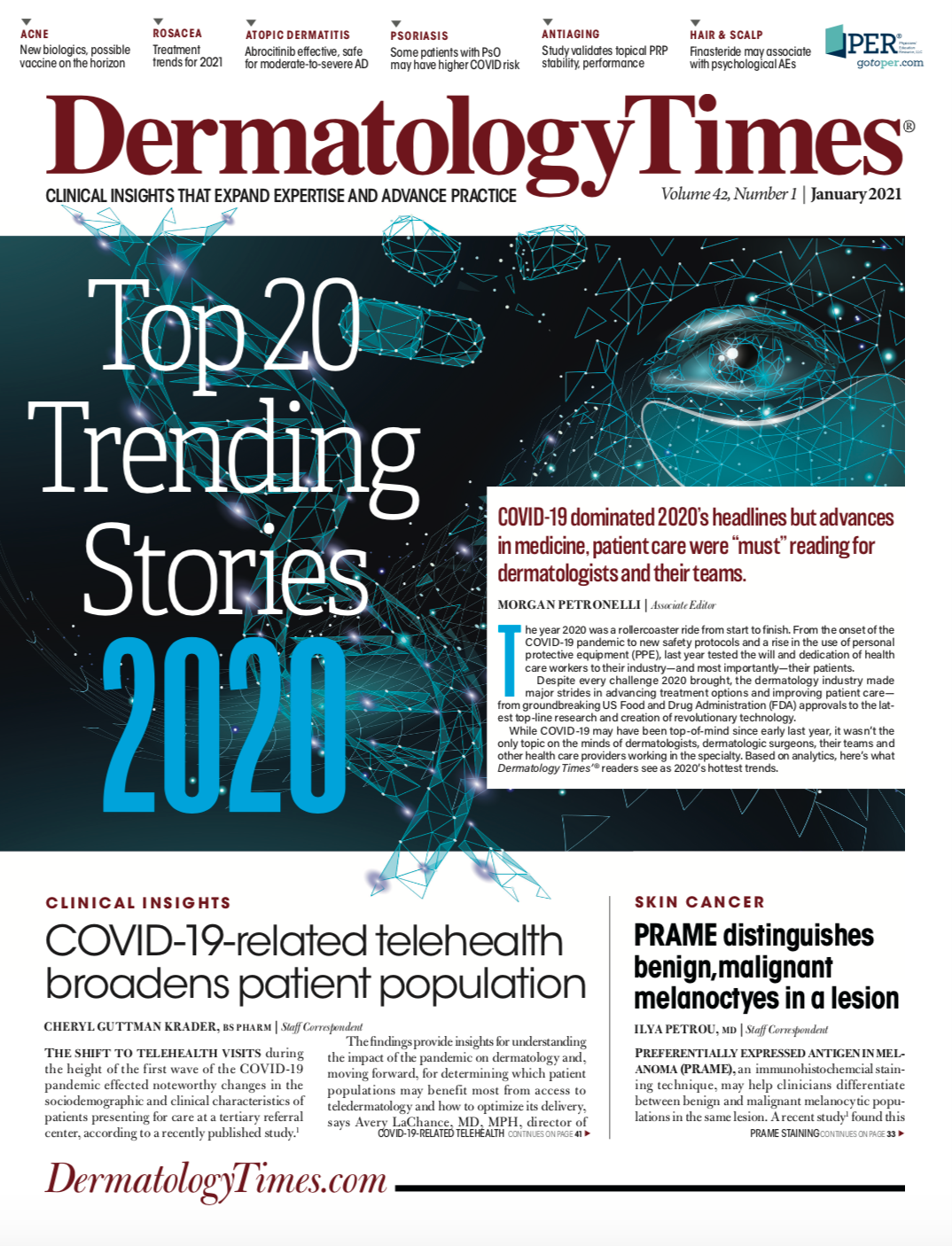- Case-Based Roundtable
- General Dermatology
- Eczema
- Chronic Hand Eczema
- Alopecia
- Aesthetics
- Vitiligo
- COVID-19
- Actinic Keratosis
- Precision Medicine and Biologics
- Rare Disease
- Wound Care
- Rosacea
- Psoriasis
- Psoriatic Arthritis
- Atopic Dermatitis
- Melasma
- NP and PA
- Skin Cancer
- Hidradenitis Suppurativa
- Drug Watch
- Pigmentary Disorders
- Acne
- Pediatric Dermatology
- Practice Management
- Prurigo Nodularis
- Buy-and-Bill
Publication
Article
Dermatology Times
Positive Study Outcomes Pave the Way for Topical PRP
Author(s):
Results of a recent in vitro study show that a novel topical cosmetic vehicle successfully stabilizes and preserves platelet-rich plasma (PRP).
A refrigerated topical cosmetic formulation shows 90-day stability for platelet-rich plasma (PRP) and provides statistically significant improvement in facial appearance at 16 weeks, reports a new study1.
Although PRP has gained popularity in aesthetic medicine as an injectable, difficulties with stability and shelf-life slowed development of an effective topical vehicle. “Degranulation of PRP must be inhibited until the topical preparation is applied to the skin," the authors wrote.
Their research evaluated the role of platelet homeostasis in a novel PRP formulation. It also examined whether this topical vehicle could maintain platelet granule stability while delivering an effective PRP-containing anti-aging formulation.
A multi-site in vitro assessment tested platelet stability and morphology over 90 days. Researchers studied four samples: cosmetic base, PRP, cosmetic base+PRP, and cosmetic base+ PRP+hydrochloric acid (HCl) activator. They stored some samples at room temperature, others at 4°C refrigeration for 90 days and tested them at set times.
Analyte concentration analysis using enzyme-linked immunosorbent assay (ELISA) demonstrated that the PRP is substantially more inactive than control conditions as evaluated by analyte concentration curves (PDGF-AB, EGF, and P-selectin).
Platelet morphology analysis using scanning electron microscopy (SEM) and light microscopy (LM) showed the PRP has less aggregation/activation over time within the cosmetic base. It also verified that refrigeration is superior to room-temperature storage.
Though well-tolerated, the vehicle must be refrigerated at all times and removed from the refrigerator only at the time of application.
That resulted in a higher quality and quantity of preserved platelets compared to the control conditions at 30, 60, and 90 days and demonstrated topical clinical PRP facial benefits, conclude the authors.
A double-blind split face in vivo study (n=20) followed. This single-site study evaluated the effect of 5-7x and 2-3x baseline platelet count PRP on facial photoaging.
After subjects underwent a phlebotomy, 3 mL of PRP obtained from two different harvesting methods (one to obtain 60 mL of anti-coagulated blood, a second to obtain 20 mL) was added to the vehicle.
Subjects were randomized to determine which side of the face would receive the 60-mL PRP-containing cosmetic and which would receive the 20-mL formulation. Each cosmetic used in this double-blind study had a total of 3mL of PRP or 10% PRP in the cosmetic base (BioLyte complex in SoME, Aesthetics Biomedical, Phoenix, Ariz.).
Researchers applied one bottle to the randomized right face, the other to the randomized left face twice daily. Subjects returned to the center for identical study activities at week 8 and week 16, which marked completion. Eight volunteers underwent a 2-mm punch biopsy from the randomized left or right preauricular area at baseline—2 at week 8 and 6 at week 16.
The dermatologist investigator and subjects assessed each side of the face separately for efficacy. Data showed that both preparations produced statistically significant results at week 16. Both investigator assessment and histology established parity between the 20-mL and 60-mL PRP preparations.
Disclosures:
Wooten and Rheins work for Aesthetics Biomedical, Inc, Phoenix, Ariz.
Draelos and Keller served as researchers for Aesthetics Biomedical, Inc.
Aesthetics Biomedical, Inc, Phoenix, funded the study.
Reference:
1. Wooten S, Draelos ZD, Kellar R, Rheins L. The role of platelet homeostasis in a novel topical PRP formulation. J Drugs Dermatol. 2020;19(12):1215-1218. doi:10.36849/JDD.2020.5495. ABSTRACT






